About the Gemstones from our Mines
The Sapphire / The Zircon / The Spinel term definitions
The Sapphire consists largely of Aluminium Oxide and has a chemical formula of „Al2O3“. It is a variety of Corundum and belongs to the Family of Oxides. It is the second hardest commercially mined Gemstone, and on Moh’s scale of hardness, ranging from 1(Talcum) to 10 (Diamond), the Sapphire is placed at 9. This hardness and the absence of a natural cleavage plane, makes this an ideal jewellery stone that can be worn on a daily basis without any undue effect on its appearance. Due to its high density of about 4 g/cm3 it tends to concentrate along with other heavy minerals on or close to the Bedrock in alluvial deposits. The relatively high refractive Index of approximately 1.7 gives this Gemstone, when correctly faceted to the prescribed angles, a very intense sparkle.
This, in combination with the fact that Corundum can be found in almost any colour and sometimes even with a combination of Colours (Party colour) in the one stone makes it a very special Gem. The colour palette of this mineral ranges from blue, pink, green, yellow, through glassy clear (Leuko Sapphire) to a orange-pink (Padparatscha) and of course red (Ruby). And all these colours come also in a myriad of different hues, and make for an incredible colour variety. But we should not forget the beautiful Star Sapphires, who’s Rutile inclusions tend to produce a six rayed Star reflection after it has been expertly cut in to a Cabochon. The central Queensland Gemfield in Australia, where our mines were located, is renowned for producing exceptional quality fancy (Any colour except blue and Red) and “Party colour” Sapphires. But these varieties are very rare and unique Gems that command at times even higher prices than fine blues.
The Zircon is a member of the silicate family and its chemical formula is „ZrSiO4“. Zirconium Silicate is with an age of about 4 billion years probably the oldest mineral known to man and it is relatively common in earths crust as minute crystals and grains. Sizes that can be fashioned in to Gemstones however are much more rare. This mineral is extremely resistant to the destructive forces of heat and acid, it does however change its colour after being subjected to very moderate temperatures. Despite a hardness of between 6.5 – 7.5 it is not recommended that facetted Zircons are set in to Fingerings that are worn on a daily bases because of the inherent brittleness of this Gem. The sharp edges between facet’s are subject to excessive wear if coming in to firm contact with hard objects. Set in to Earrings, Brooches and Pendants on the other hand does not present a problem, if these items are not treated in a overly rough and careless manner. The high density of 3.9 – 4.8 g/cm3 means that it congregates naturally in the same layers of sand and gravel as do the Sapphires in our mines. Due to this minerals very high Refractive Index of 1.925 – 2.024, it becomes a bright, lustrous and sparkling Gem after it has been faceted in the correct manner. It can almost rival Diamonds in fire and dispersion. All though Zircon can be found n a wide variety of colours in many places of the globe, it’s light to dark brown ihues were most common in our mines. Only on very rare occasions did we find a dark red or clear white example. Some of the fancy colours are usually attained by heating up crystals of the dark brown variety. Very minute traces of Uranium and Thorium make Zircons slightly but measurably radioactive. But the amount of this radioactivity is less than insignificant as far as health is concerned.
The Spinel belongs to the Oxide group of
minerals and it goes under the chemical formula of „MgAl2O4“. A hardness of about 8 puts it between Sapphire and Zircon on Moh’s scale
of hardness. Pleonaste is the black, iron Ion containing and only variety
of this Gem that occurred in the alluvial gravels of our mines on the
Anakie Gemfields. It has a density of about 3.6 g/cm3 which entices
this Gem to collect in the same natural traps as the above mentioned
Gems.
The absence of a natural cleavage plain and its great resistance
to heat and acids make this an ideal Gemstone to be fashioned in to
Jewellery. Pleonast tends to have a beautiful lustre after it has been
expertly cut and polished by a Gem cutter. Because of the glossy black
colour of this stone it is sometimes used in Men’s
rings and cufflinks instead of the rare and much softer Onyx, who these
days is mostly being substituted anyway by treated Chalcedony or Agate.
Below are a few helpful term definitions connected with Gemstones
Carat:
Weight measure. 1ct. = 0.2g. / 5ct. = 1.0g.
Dispersion:
Is the ability of a Gemstone to split white light in to its spectral
colours.
Refractive Index:
Stands in relation to the angel at which light is deflected and how it
is reflected after passing across the borderline between two bodies. It
also stands in relation to the speed light will travel at, in a medium
other than a Vacuum.
Pleochroism:
Depicts the ability of a mineral to show two different colours if viewed
from alternative angels.
Facets:
Are the flat areas which are cut on to a Gemstone and Polished in the
process of faceting.
Crown:
The top 1/3 of a facetted Gemstone.
Pavilion:
The bottom 2/3 of a facetted Gemstone.
Specific density:
The weight of a mineral as opposed to an equal amount of water.
Moh’s Scale of Hardness:
1 = Talc
2 = Gypsum
3 = Calcite
4 = Fluorite
5 = Apatite
6 = Ortoclase Feldspar
7 = Quartz
8 = Topaz
9 = Corundum
10 = Diamond
 Sapphire / S-35 0.35ct. / 4.00mm CHF 35.00 |
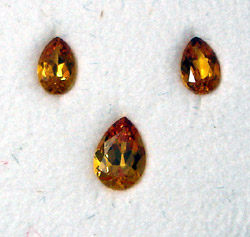 Sapphire / S-50 Set 0.79ct. 2 x 4.5mm x 3.0mm/1 x 5.4mm x 3.8mm CHF 120.00 |
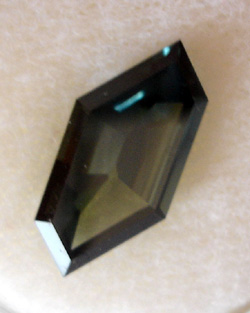 Sapphire / S – 53 4.05ct. / 16.00mm x 7.70mm CHF 200.00 |
 Sapphire / S – 54 4.25ct. / 13.70mm x 8.00mm CHF 1700.00 |
 Sapphire / S – 56 6.20ct. / 12.00mm x 9.60mm CHF 4’880.00 |
 Sapphire / S – 07 6.30ct. / 11.50mm CHF 600.00 |
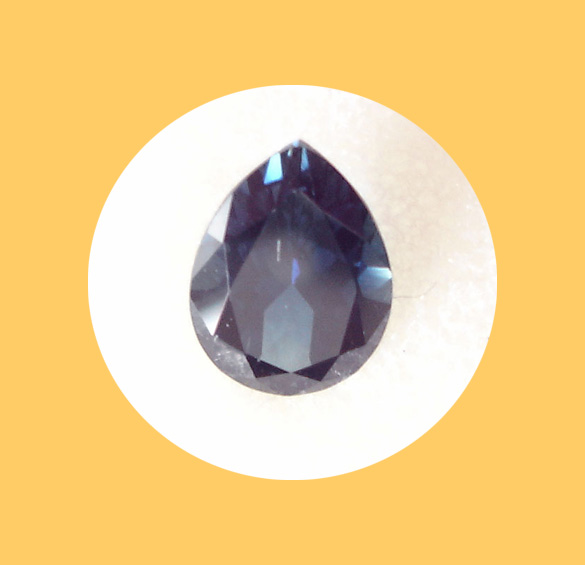 Sapphire / S – 12 2.25ct. / 9.80mm x 7.30mm CHF 135.00 |
 Sapphire / S – 18 0.71ct. / 5.30mm CHF 45.00 |
 Sapphire / S-27 2.09ct / 7.50mm CHF 400.00 |
 Sapphire / S – 29 0.37ct. / 4,10mm CHF 40.00 |
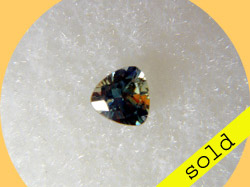 Sapphire / S – 39 0.37ct. / 4.40mm CHF 40.00 |
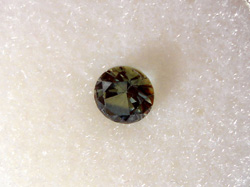 Sapphire / S – 43 0.57ct. / 5.00mm CHF 55.00 |
 Sapphire / S – 44 0.40ct. / 5.00mm x 3.70mm CHF 40.00 |
 Zircon / Z – 01 4.90ct. / 9.60mm CHF 290.00.- |
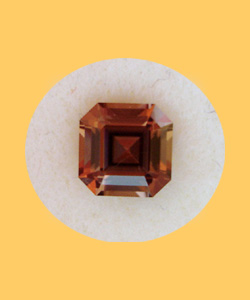 Zircon set / Z – 02 Total weight = 13.45ct 1 @ 15.20mm x7.20mm 2 @ 7.20mm x 7.30mm CHF 670.- |
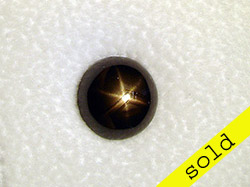 Star Sapphire / S - 63 2.70ct. / 8.50mm CHF 54.00 |
 Star Sapphire / S - 64 2.60ct. / 8.60mm CHF 100.00 |
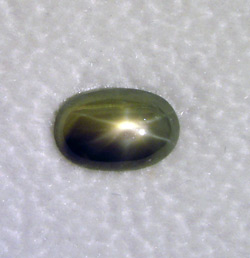 Star Sapphire / S - 65 1.15ct. / 8.00mm x 5.40mm CHF 30.00 |
| New Trapiche Sapphire A very rare novelty for the discerning and knowledgeable collector |
 TS - 02r / 17.30ct. 13.00mm x 13.00mm x 8.70mm CHF 17.30 |
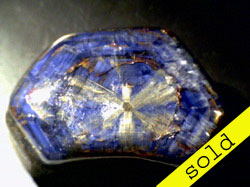 TS - 03c / 339ct. 40.50mm x 27.00mm x 23.70mm CHF 508.50 |
 TS - 04c / 258ct 30.00mm x 28.00mm x 25.00mm CHF 309.60 |
 TS - 06c / 27.10ct. 14.40mm x 10.05mm x 17.00mm |
| All
above information subject to change. Postage not included in price. |
| ^top^ |
| Matrix- Boulder- and white Opal from Australia |
 Opal / BO626 14.60mm x 5.50mm x 1.90mm 1.20ct. / CHF 30.- |
 Opal / BO618 27.50mm x 5.00mm x 3.20mm 2.47ct. |
 Opal / BO621 18.50mm x 7.20mm x 3.00mm 2.49ct. / CHF 150.00 |
 Opal / BO630 Opal set in Sandalwood Opal: 20.00mm x 6.50mm x 2.50mm Holz:50.00mm x 25.00mm x 6.00mm 2.00ct. / CHF 230.00 |
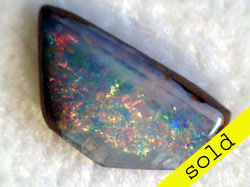 Opal BO633 11.00mm x 5.80mm x 2.00mm 0.95ct. / CHF 50.00 |
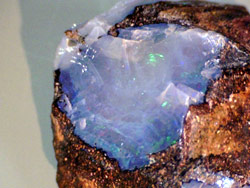 Opal BO637 28.40mm x 25.00mm x 15.40mm 12.70g. / CHF 20.00 |
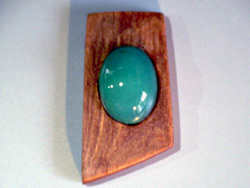 BO639 Chrysoprase gesetzt in Sandalwood 28.90mm x 15.00mm x 8.60mm Komplett 13.20mm x 9.70mm x 4.40mm Chrisofrase 2.62g. / CHF 40.00 |
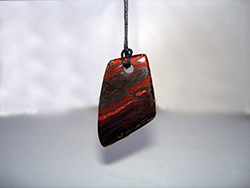 BO641 Tiger Iron 45.00mm x 29.40mm x 6.40mm 14.00g. / CHF 20.00 |
| rough gemstones
|
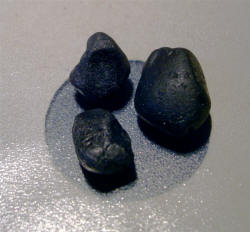 Spinel (Pleonaste) / PL - 701 3pc. total 65.40ct. CHF 65.40 |
 Zircon / ZR504 1pc. @ 33.50ct. / i3 CHF 83.75 |
 Zircon / ZR505 1pc. @ 17.95ct. 16.00mm x 9.70mm x 9.00mm CHF 71.00 |
 Zircon / ZR507 1pc. @ 9.50ct. 14.00mm x 9.00mm x 8.00mm CHF 28.50 |
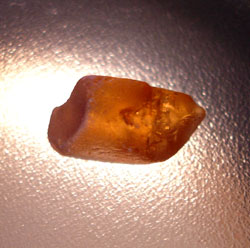 Zircon / ZR508 1pc. @ 11.58ct. 15.30mm x 9.00mm x 7.30mm CHF 34.75 |
 Zircon / ZR509 1pc. @ 10.65ct. 14.40mm x 9.00mm x 6.50mm CHF 31.95 |
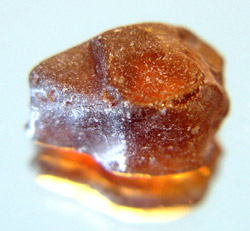 Zircon / ZR510 1pc. @ 7.70ct. 10.70mm x 8.00mm x 7.40mm CHF 23.10 |
| All
above information subject to change. Postage not included in price. |
| ^top^ |